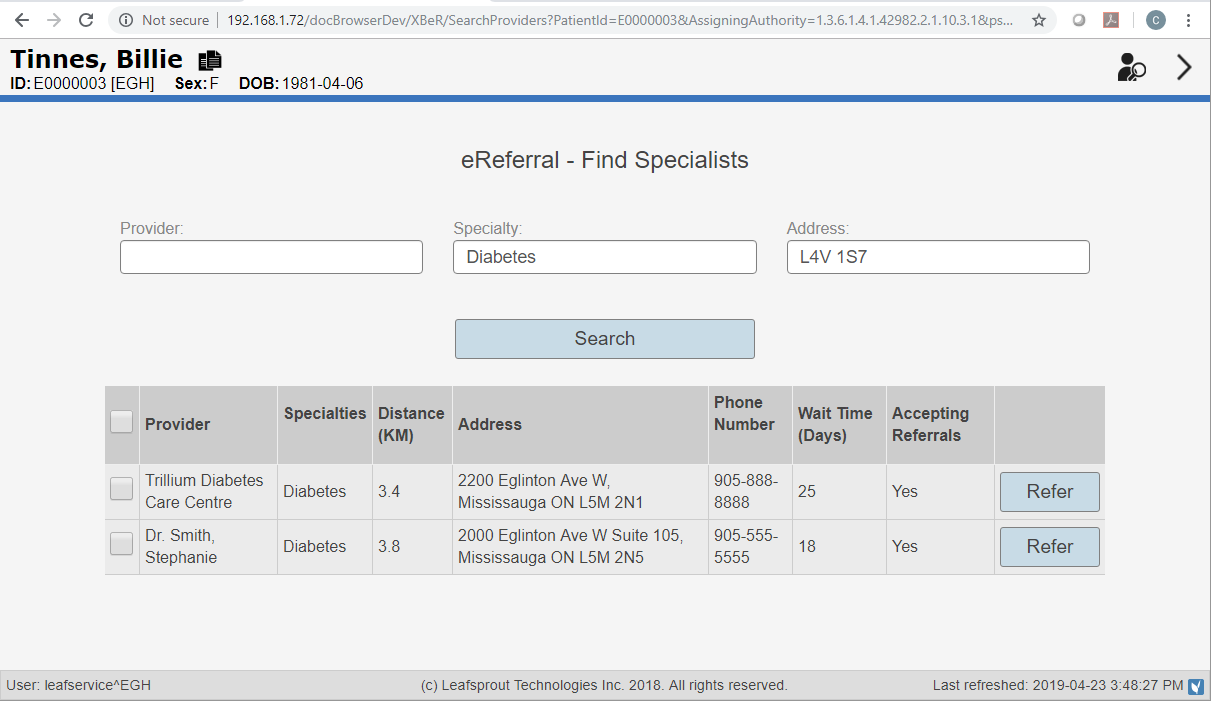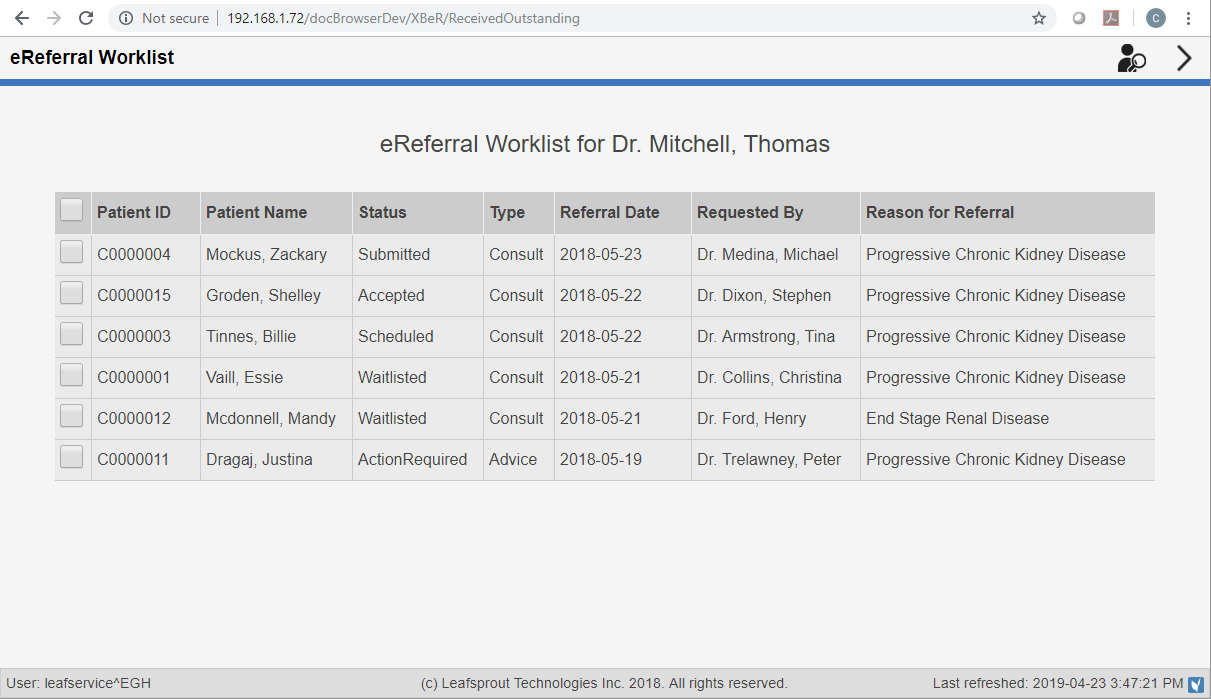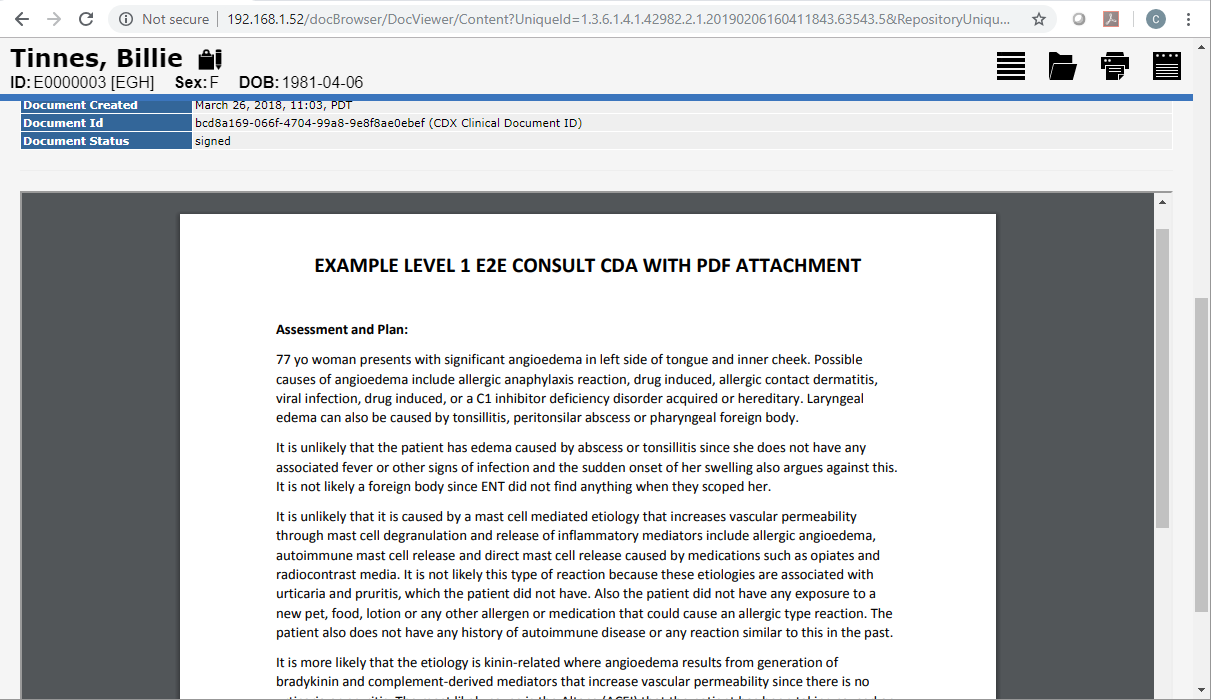eReferral
eReferral is a web-based electronic referral management system which is an optional add-on to the Clinician Portal.
It allows a user (e.g., a general practitioner) to electronically refer their patients to another practitioner, attach appropriate documentation to the referral, and track the referral
through to its conclusion.
Screenshots: Find a Specialist, eReferral Worklist, Document Attached to Referral



Features:



- Supports custom referral pathways for various clinical specialties.
- Enforces a standardized referral form for each pathway.
- Allows for input attachments to the referred doctor, e.g., relevant imaging exam, relevant lab report can be electronically included in the request.
- Supports output attachments to the referring doctor, e.g., diagnostic report or other results of the referral can be passed back.
- Supports two types of referrals: consult requests (for in-person consultation) and advice requests (to render professional opinion only).
- Distributes referrals across providers who are appropriate for a given pathway (demand can be distributed across multiple resources ).
- Supports referrals to organizational providers (e.g., clinic) as well as individual providers (e.g., specific doctor at a clinic).
- Integrates with postal code databases to automatically calculate distance between the patient and the referred doctor.
- Allows each provider to configure the types and pathways of referrals they accept.
- Supports tracking of the status of each referral in real time (e.g., submitted, accepted, rejected, scheduled, waitlisted, completed, cancelled, action required).
- Allows referring and referred providers to search for referrals by type, status, patient, etc.
- Keeps the relevant parties informed of status changes of the referrals via optional email notifications.
- Improve patient safety and clinical outcomes through standardization of referrals - ensuring they are complete and appropriate.
- Improve accessibility and reduce average wait times for scheduled health services.
- Lower overall cost of scheduled health services through better resource planning, utilization and workload distribution.
- Increase efficiency in scheduled health services through automation of the referral process - no missed or forgotten phone calls, misplaced paper, error-prone fax exchanges.